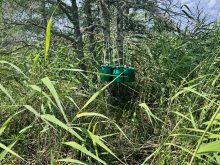In this winter’s battle for acres, the pipsqueak crops might get bashed by the big bullies of the playground, analysts say.
After a couple of years of stealing everyone else’s territory, red lentils and other small acreage crops may end up in their little corners of the Prairies, with oats, wheat, canola and barley grabbing back acreage.
“Lentils having double wheat’s return for two years, that pulled land into the crop,” said Brian Clancey, the publisher of the Stat special crops market information service.
Read Also

Government, industry seek canola tariff resolution
Governments and industry continue to discuss how best to deal with Chinese tariffs on Canadian agricultural products, particularly canola.
“Now we’re probably going to get back to a more historically normal relationship.”
Jon Driedger of FarmLink Marketing Solutions agreed.
“In the last couple of years, none of the cereals has shown much attraction when guys were making these early decisions, but it looks like that’s starting to change, so maybe this is a chance for guys to pull rotations back into line,” said Driedger.
Analysts in Canada and the U.S. said this fall’s powerful crop market rally has made dominant crops like wheat, canola, oats, barley, corn and soybeans popular with growers. Not only are returns good but hedging is much easier with the big crops than pulse and special crops.
Why take a chance on small acreage crops when you can lock in a profit with a big crop with a futures market?
“With canola, you can already lock in next year’s price. With these others, you can’t,” said Clancey.
“Futures market transparency to the grower is so superior to these other crops.”
While many eyes will watch wheat and canola prices vie for farmers’ acres in the spring, the most eye-popping results may occur with oats.
“We need a minimum of a 20 percent increase (in acres),” said Randy Strychar, analyst with Oatinsight.
“If we don’t get that, you’d better pray for above average yields and below average abandonment. A 30 percent increase, on average yields and abandonment, would just make everything comfortable.”
Strychar thinks current prices could draw in that extra acreage because there is a big spread to canola and wheat, but there is room for oat prices to widen the spread to get the acres needed.
“I don’t think this price run is over. We haven’t rationed demand yet,” said Strychar.
“The gap could open even wider.”
Clancey said he thinks durum, wheat and barley will steal special crop acres.
Driedger said special crops buyers will need to start showing good new crop prices in contract offers or farmers will just stick with big, simple to market crops.
“So many of these prices aren’t established yet,” said Driedger.
“They need to dangle some pretty nice prices.”
Most analysts agree that cereal prices this winter will generally be stronger than oilseed prices because corn acres need to expand more than soybean acres next spring.
“Corn prices need to go up faster than (soy) bean prices,” said Paul Georgy, president of Allendale, Inc.
“To attract more corn acres, we really need to be at (a ratio of soybean prices to corn prices) of two or less.”
When soybean prices are about 2.1 times the price of corn, acreage won’t shift between the two crops.
When it falls to two-to-one or less, acres migrate into corn from soybeans. In 2008, the ratio fell to 1.9 to one and corn acres leapt.
Georgy said relative corn prices will have to surge over the winter to increase corn acres, because farmers this year got such good soybean yields they are likely to favour that low input crop.
“The tendency of the producer is to do what they did the year before if they had good luck at it.”
John Sanow of DTN thinks the conditions are right for a big rally over the winter, as long as corn demand stays strong.
A number of crops have low ending- stocks-to-use ratios projected, and that could lead to a furious bidding war.
“I think we’re in for a repeat of what we saw in 2008,” said Sanow.
“We may not reach the all-time highs, but I think we’re going to come awfully close.”

















